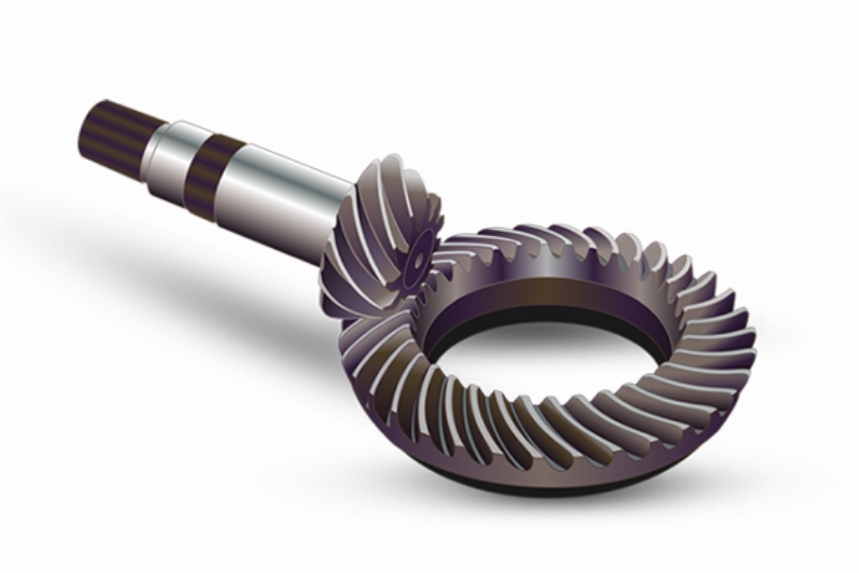
Spiral bevel gear is essential components in agricultural machinery, where they play a crucial role in transmitting power efficiently between intersecting shafts at various angles. Their use is critical in enhancing the performance, durability, and reliability of farming equipment. Here’s how spiral bevel gear is utilized and enhanced for applications in agricultural machinery:
1. Enhanced Performance
- Efficient Power Transmission: Spiral bevel gear enable more efficient power transmission with reduced power loss compared to other gear types, such as straight bevel gear. This efficiency is crucial for maximizing the performance of machinery such as tractors, combines, and other heavy-duty equipment.
- Smooth Operation: The curved teeth of spiral bevel gear engage more gradually and smoothly than straight-cut teeth, leading to quieter operation and less vibration. This smooth operation is beneficial for the longevity of the machinery and comfort of the operator.
2. Durability and Reliability
- High Load Capacity: The unique geometry of spiral bevel gear allows for a larger contact surface area, which distributes the loads more evenly across the gear teeth. This feature is vital in agricultural settings where equipment often faces high torque and variable loads.
- Robust Construction: Spiral bevel gear in agricultural machinery are typically made from high-strength steel alloys and undergo processes like carburizing or heat treatment to enhance their durability and resistance to wear and fatigue.
3. Design and Customization
- Compact Designs: The ability of spiral bevel gear to transmit power at various angles allows for more compact and versatile machinery designs. This design flexibility is particularly useful in agricultural machinery, which often operates in constrained or uneven environments.
- Customization: Manufacturers can customize the gear ratios and tooth geometry to suit specific agricultural applications, optimizing machinery for different types of tasks and conditions.
4. Applications in Agricultural Machinery
- Tractors: Used in the transmission systems of tractors to deliver power from the engine to the wheels and operating hydraulics efficiently.
- Combine Harvesters: Employed in the drive systems of combine harvesters to transfer power to the complex mechanisms involved in cutting, threshing, and gathering crops.
- Sprayers and Spreaders: Spiral bevel gears are used in sprayers and spreaders to ensure precise control of the distribution mechanisms, which is crucial for achieving effective and even application of pesticides and fertilizers.
5. Maintenance and Serviceability
- Ease of Maintenance: The robustness of spiral bevel gear reduces the frequency and complexity of maintenance routines. When maintenance is required, the modular design of gear assemblies in modern agricultural machinery facilitates easier access and serviceability.
- Long Service Life: The long service life of well-maintained spiral bevel gear helps reduce the overall operating costs of agricultural machinery, an important consideration for farming operations where equipment uptime is critical.
6. Technological Integrations
- Advanced Lubrication Systems: Innovations in lubrication technologies ensure that spiral bevel gear in agricultural machinery operate under optimal conditions, which extends their life and reduces maintenance needs.
- Smart Sensors and Monitoring: Integration of sensors to monitor the performance and condition of gear systems in real-time allows for predictive maintenance and immediate troubleshooting, minimizing downtime and enhancing productivity.
Conclusion
The use of spiral bevel gear in agricultural machinery significantly enhances the efficiency, performance, and durability of equipment essential for modern farming. Ongoing advancements in gear manufacturing and design continue to expand their applications and effectiveness in meeting the demanding requirements of the agricultural sector. These enhancements not only improve the operational capabilities of agricultural machinery but also contribute to greater productivity and sustainability in farming operations.
